The French delicacy that can make you king and queen
Which child’s birth is the most famous one? If I ask you this question, you might ponder a bit on whether your niece or nephew has anything to do with celebrity. But as the time is coming to the end of the year, when you see the blinking Christmas tree on the street, surely the answer to my question is “Jesus”.
Most people have known about Christmas as the festival celebrating the birth of Jesus. But there is actually another Christian feast day linking to the Nativity that is not so well-known to non-Christians. And that is Epiphany, sometimes called Three Kings’ Day or Twelfth Night. It is a festival commemorating the Magi visiting baby Jesus and giving him gifts. The Magi are thought to be three of them and referred to as the three Wise Men or three Kings from the East.
You might ask now: what does this have anything to do with French bakery? Well, the Christian background mentioned above is linked to the consumption of the kings’ cake (or galette des rois in French) around the time Epiphany (6 Jan). Kings’ cake is popular in several countries, and is perhaps the most iconic cake in France in January. Nowadays, eating kings’ cakes is mostly for the enjoyable time of family or friends gathering.
There are many variants of kings’ cake. In France, there are two main versions. The Northern French kings’ cake (which is also the one in Quebec, Canada and Belgium) is flaky puff pastry infused with a French sweet sauce called frangipane, which is normally made of butter, sugar, eggs and almond; on the top there can be one of variant shapes of pattern. A pattern of swirling lines as shown in the following picture is said to symbolize the sun and its powerful vitality. In Southern France, the cake is called gâteau des rois or royaume, is donut-shaped brioche with candied fruit on the top, which by itself resembles a crown. (Some sources such Wikipedia says there is third main version in France.)
Northern French kings’ cake. Credit: Shanghai Young Bakers.
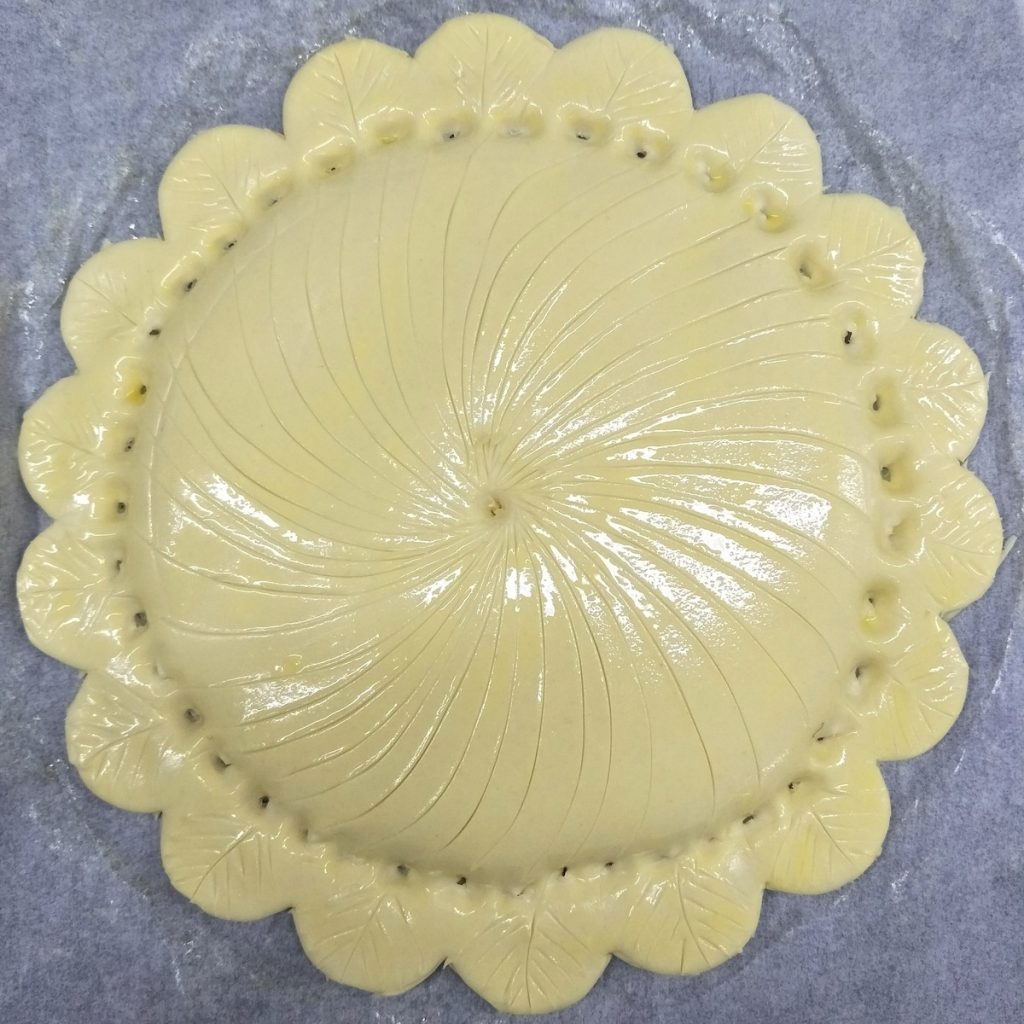
The patterned top of a Northern French kings’ cake before it is baked.
Credit: Shanghai Young Bakers.
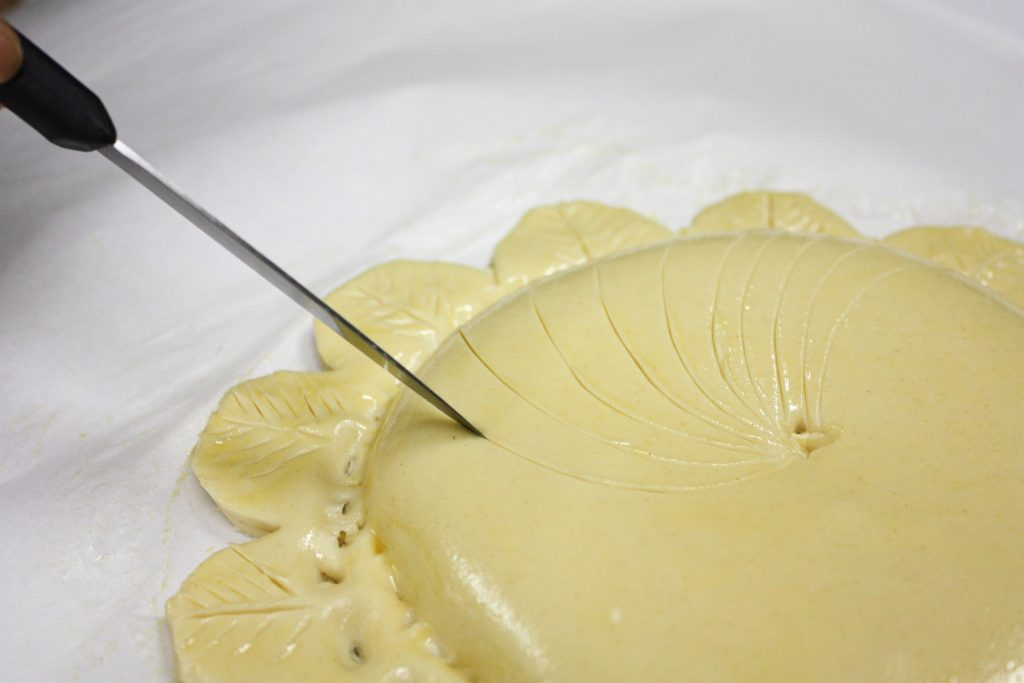
How the pattern on top of a galette is made.
Credit: Shanghai Young Bakers.

The Southern French kings’ cake, with a porcelain figurine (la fève) on top.
Credit: Shanghai Young Bakers.
In the French tradition of kings’ cake, a figurine made of porcelain or plastic would be hidden in the cake for people to ‘draw the kings’ (tirer les rois) when eating the cake. In the family gathering around 6 January, the youngest person in the house would distribute the cake slices from underneath the table to people. Whoever finds the figurine, or la fève in French, will be crowned as the king or queen with a paper crown, chooses the royal counterpart, and be considered to have the good luck. But with great power comes great responsibility, and so the paper-crowned king/queen will buy the next kings’ cake!
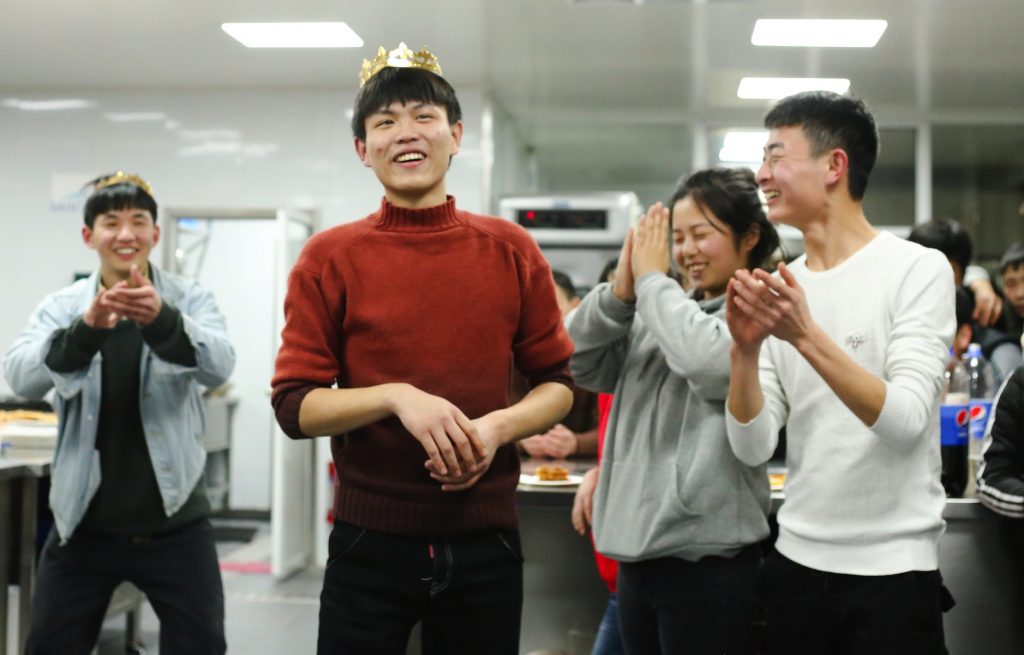
The happy scene of one of our students crowned as a king during our 2019 annual galette gathering in January. Credit: Shanghai Young Bakers.
Interestingly, fève literally means ‘bean’ in French. This is because the tradition of fève before late 19th century had been indeed a broad bean (fava bean) in the cake. This is a tradition that can be traced back to the ancient Roman time, when people celebrate the festival of Saturnalia. One Chinese source (https://zhuanlan.zhihu.com/p/89751535) suggests that originally the crowned ‘king/queen’ will need to buy all the people in the house drinks. As a bean can be eaten to free the ‘king/queen’ from this obligation, the bean is later replaced with porcelain figurine, so the ‘king/queen’must buy the drinks!
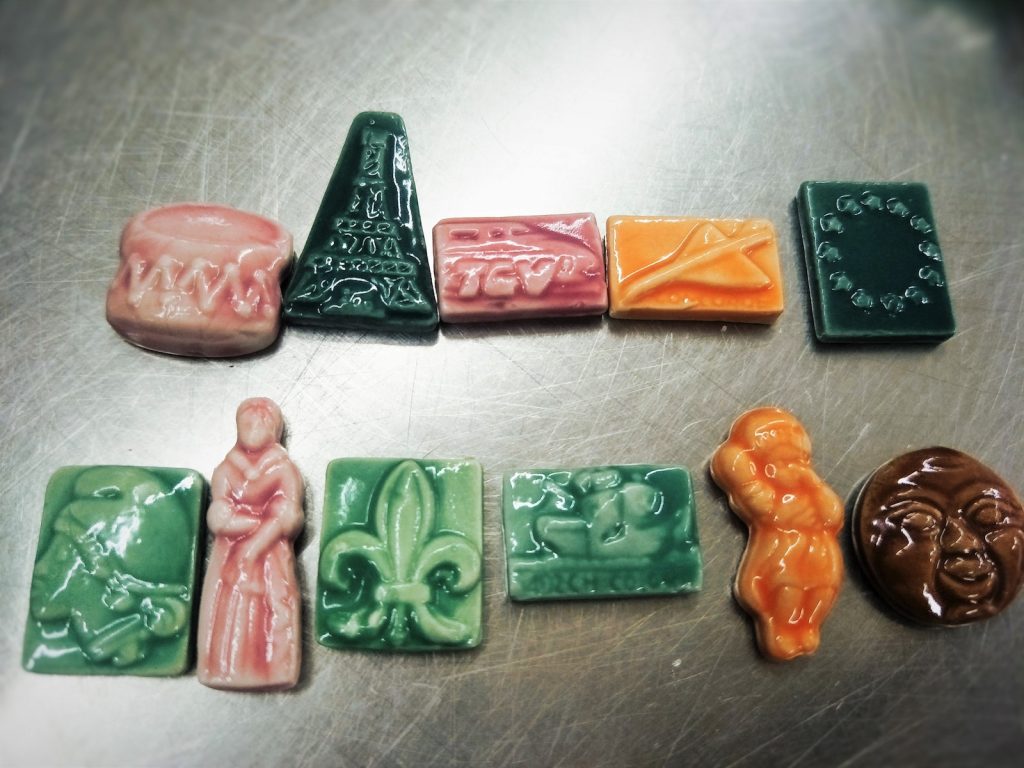
Some examples of modern day fèves.
Credit: Shanghai Young Bakers.

Hiding the fève in the frangipane.
Credit: Shanghai Young Bakers.
But for our dear readers in Shanghai, kings’ cake will not be something out of reach, for Shanghai Young Bakers has collaborated with our sister social café and bakery, Village 127, to launch a seasonal menu of kings’ cake!
Under the technical guidance of SYB, Village 127 will be producing and selling a total of four flavours of kings’ cake. For the Northern French galette, you can choose among three flavours of frangipane, chocolate frangipane and apple compote. For the Southern French brioche galette, you can have the orange blossom flavour. Our external French tasters have described the test cake samples as authentic and delicious.
As an internal taster, my favourites have been the northern galette: the frangipane is really a yummy sauce. It is creamy and smooth, sweet but not that sweet, giving the tongue a just enough lovely stimulation. The chocolate frangipane flavour is quite an interesting one, as the chocolate inside give adequate and mild note of ‘chocolateness’, not too strong to put you right off. The apple compote is also an excellent flavour for the fact that the apple sauce is creamy and has a good balance of acidity and sweetness, bringing a refreshing fruity taste to the puff pastry.
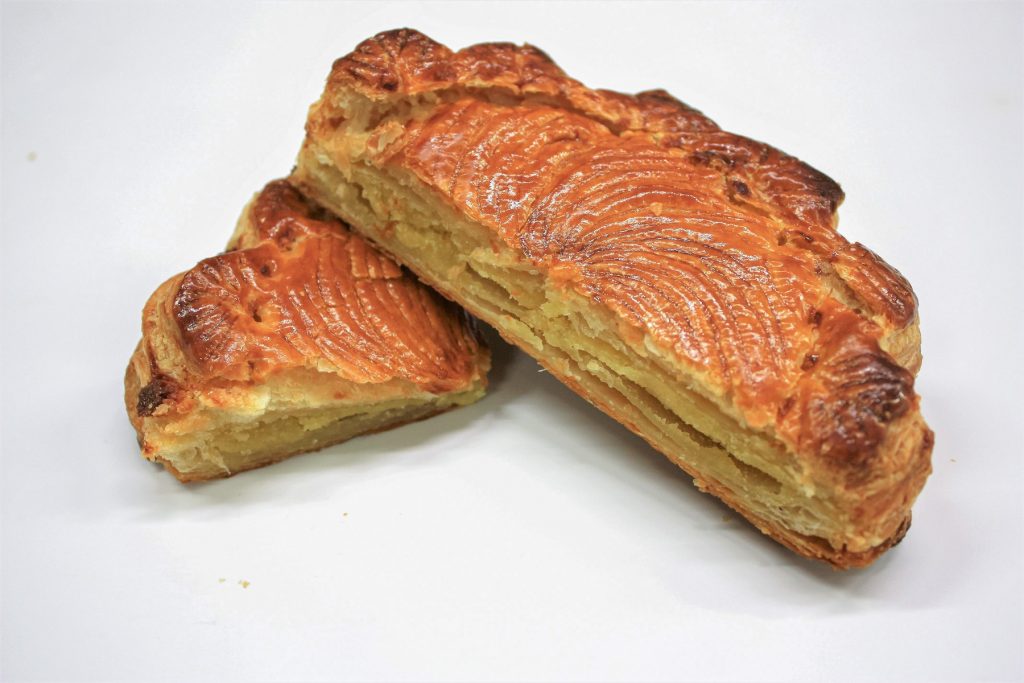
The inside of a classic frangipane galette. Credit: Shanghai Young Bakers.
But the most important feature of this catering service is that by purchasing the cakes, you can not only enjoy the bonne bouche françaie with your family or friends, but also support the charity programme of Shanghai Young Bakers!
If you’re interested in enjoying some delicious kings’ cake and helping us to empower more Chinese youths, feel free to scan the following code to order now!
Of course, one paper crown and one fève come with each galette. Though for safety reason, the fève is not put inside the cake during production but will be in the box. Don’t forget to hide it in the cake if you want to ‘draw the kings’!
If you want to learn about the secrets of making delicious kings’ cake, then on 11 January 2020, we will have a five-hour kings’ cake and palmier public class in which you can learn with our teacher about making kings’ cake. Contact us now for more info and registration!
Contact:Eve Wu
Tel:136 8168 7194
E-mail:baking@shanghaiyoungbakers.com
Wechat:




